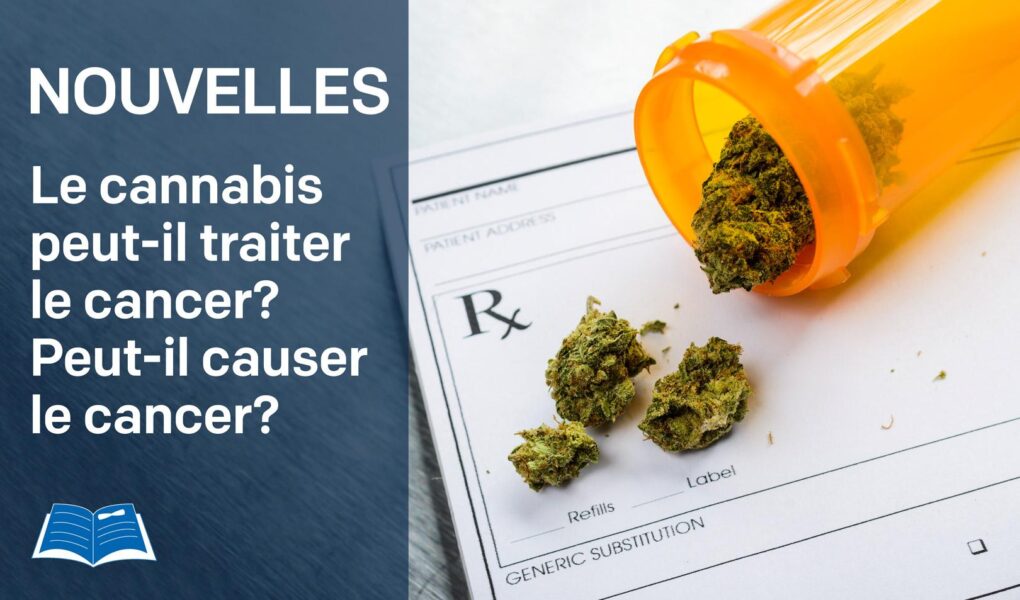Title: Exploring the Intersection of Cancer and Cannabis: A Growing Conversation
In recent years, the conversation surrounding cannabis has evolved from one of stigma and prohibition to a nuanced discussion on its potential benefits and applications in the field of healthcare. Among the most compelling areas of interest is the relationship between cannabis and cancer treatment. As patients and healthcare providers alike search for holistic approaches to mitigate the harsh effects of conventional therapies, cannabis has emerged as a subject of exploration, polarized opinion, and hopeful anecdote. With countless stories of individuals seeking relief from symptoms such as pain, nausea, and anxiety, the intrigue surrounding cannabis as a complementary treatment for cancer is undeniable. This article endeavors to peel back the layers of this complex topic, examining the scientific research, patient experiences, and regulatory landscape that shape our understanding of cannabis in the context of cancer care. As we navigate the intersection of hope and skepticism, we invite you to join us on this journey of discovery, where science meets personal narrative, and where unanswered questions beckon for exploration.
Table of Contents
- Exploring the Use of Cannabis in Cancer Symptom Management
- Scientific Insights into Cannabinoids and Their Impact on Tumor Growth
- Patient Perspectives: Personal Experiences with Cannabis During Treatment
- Guidelines for Integrating Cannabis into Cancer Care Plans
- Q&A
- The Way Forward
Exploring the Use of Cannabis in Cancer Symptom Management
As the conversation about holistic approaches to health continues to grow, the potential of cannabis in alleviating the burdens of cancer treatment warrants serious attention. Patients facing the rigors of chemotherapy and other modalities often report a host of debilitating side effects, including chronic pain, nausea, and anxiety. Cannabis, with its unique profile of cannabinoids, presents a promising alternative or adjunct to conventional pharmaceuticals. Evidence suggests that compounds like THC and CBD may help mitigate these symptoms, improving the overall quality of life for many individuals.
Moreover, the therapeutic application of cannabis varies among patients, emphasizing the need for personalized treatment plans. Some common uses include:
- Pain Relief: Effective in managing both acute and chronic pain.
- Nausea Reduction: Particularly beneficial in alleviating chemotherapy-induced nausea.
- Appetite Stimulation: Useful for combating weight loss and improving nutrition.
- Anxiety Management: Helps to reduce stress and enhance mood.
These applications reflect a growing body of research highlighting how cannabis may complement standard cancer therapies. Utilizing a tailored approach allows healthcare providers to design comprehensive wellness plans that respect patients’ unique needs and preferences.
Scientific Insights into Cannabinoids and Their Impact on Tumor Growth
The relationship between cannabinoids and tumor growth is an evolving area of research, shedding light on the potential therapeutic benefits of cannabis in oncology. Studies suggest that various cannabinoids, particularly THC (tetrahydrocannabinol) and CBD (cannabidiol), may exert anti-tumor effects through several mechanisms, including:
- Inhibition of cell proliferation: Cannabinoids have been shown to slow down the growth of cancer cells, effectively hindering their ability to multiply.
- Induction of apoptosis: Some cannabinoid compounds can initiate programmed cell death in malignant cells, promoting the elimination of tumors.
- Reduction of metastasis: Research indicates that cannabinoids may help restrict the spread of cancer to other parts of the body.
Furthermore, the entourage effect in cannabis—a phenomenon where different cannabinoids and terpenes work synergistically—enhances its overall pharmacological impact. The potential for cannabinoid treatments extends beyond just direct anti-tumor effects; they could also alleviate symptoms related to cancer and its treatment. A glimpse into some of these potential benefits can be found in the table below:
| Benefit | Details |
|---|---|
| Pain relief | Cannabinoids may help manage chronic pain associated with cancer. |
| Appetite stimulation | Can assist in combating cachexia and improve appetite in patients undergoing treatment. |
| Nausea reduction | Compounds like THC are known to alleviate nausea and vomiting stemming from chemotherapy. |
Patient Perspectives: Personal Experiences with Cannabis During Treatment
For many patients navigating the complexities of cancer treatment, cannabis has emerged as a beacon of hope. The stories shared by those who have incorporated cannabis into their routines highlight its multifaceted benefits. From alleviating pain to enhancing appetite, personal accounts often emphasize the relief experienced during a particularly grueling treatment phase. Patients have noted that cannabis helped them cope with symptoms that standard medications struggled to address, allowing for a more tolerable experience throughout their journey.
Additionally, the communal aspect of using cannabis has significantly contributed to the sense of empowerment among users. Many report feeling less isolated in their struggles, as they share experiences and tips within support groups. The holistic approach to combining traditional therapies with cannabis use has fostered a sense of control over their health. Insights from patients reveal a few key themes:
- Improved Quality of Life: Enhanced mood and reduced anxiety made daily challenges easier to face.
- Appetite Stimulation: Many patients found it easier to eat, which is crucial during treatment.
- Pain Management: A significant reduction in pain levels was reported, allowing for a gradual return to normal activities.
Guidelines for Integrating Cannabis into Cancer Care Plans
When considering the integration of cannabis into cancer care plans, patients and healthcare providers should prioritize an individualized approach. Consultation with healthcare professionals is vital to ensure that any cannabis use aligns with the patient’s overall treatment goals. Patients should be encouraged to openly discuss their interest in cannabis, including any pre-existing conditions, medications they are currently taking, and potential interactions that might arise. This dialogue will foster a safe environment for exploring the most appropriate forms of cannabis—be it oils, edibles, or other delivery methods that best suit the patient’s lifestyle and preferences.
Furthermore, understanding local regulations and guidelines is crucial for patients considering cannabis as part of their cancer care. Since legality and rules surrounding cannabis use differ widely, patients must familiarize themselves with the laws in their specific region, including dosage limits and permissible forms of cannabis. Below is a summary table outlining common delivery methods and considerations:
| Delivery Method | Considerations |
|---|---|
| Oils/Tinctures | Fast-acting, easy to dose. |
| Edibles | Longer onset, potential for overconsumption. |
| Vaping | Quick relief, but may irritate lungs. |
| Topicals | Localized relief without psychoactive effects. |
Lastly, patients must be mindful of documenting their experiences with cannabis, noting any changes in symptoms or side effects. Keeping a journal can help both the patient and healthcare provider tailor the cannabis use to achieve optimal benefits. A systematic approach to assessment can guide adjustments in dosages and methods to enhance the therapeutic effects of cannabis, ensuring it remains a supportive part of the cancer care journey.
Q&A
Q&A: Understanding Cancer and Cannabis
Q1: What is cancer cannabis, and how does it differ from regular cannabis?
A1: Cancer cannabis refers to specific strains or formulations of cannabis that are often explored for their potential effects on cancer symptoms and treatment side effects. While all cannabis interacts with the body’s endocannabinoid system, cancer cannabis may focus on particular cannabinoids, such as THC and CBD, believed to provide relief from pain, inflammation, and nausea often associated with cancer therapies.
Q2: What evidence is there to support the use of cannabis in cancer treatment?
A2: Research on cannabis for cancer treatment is emerging and provides a mixed picture. Some studies suggest that cannabinoids may help alleviate symptoms like pain and nausea, while others explore their potential to inhibit tumor growth. However, many findings are preliminary, and more extensive clinical research is needed to establish definitive conclusions.
Q3: Can cannabis cure cancer?
A3: Currently, there is no scientific evidence to suggest that cannabis can cure cancer. While some laboratory studies suggest that certain cannabinoids may have anti-tumor properties, this data is not enough to warrant cannabis as a standalone treatment. It is often considered as a complementary option to traditional therapies, focusing on symptom management rather than a cure.
Q4: How does cannabis help alleviate the side effects of cancer treatments?
A4: Cannabis is believed to help manage several common side effects of cancer treatments, such as nausea, vomiting, pain, and loss of appetite. Cannabinoids like THC can stimulate appetite and reduce nausea, while CBD may contribute to anti-inflammatory effects and pain relief, providing overall comfort to patients during their treatment journey.
Q5: What forms of cannabis are available for cancer patients?
A5: Cannabis for cancer patients is available in various forms, including oils, tinctures, edibles, capsules, vaporized products, and topicals. Patients can choose the method that best suits their comfort and lifestyle, though their choice might also be influenced by specific symptoms they wish to manage.
Q6: Are there any risks associated with using cannabis during cancer treatment?
A6: While many patients find relief with cannabis, it’s important to note potential risks, such as interactions with other medications, impairment of cognitive function, and addiction. Moreover, the quality and dosage of cannabis can vary significantly, affecting its safety and efficacy. Patients should consult healthcare professionals before integrating cannabis into their treatment plans.
Q7: How can patients ensure they are using cannabis safely and effectively?
A7: To use cannabis safely, patients should work closely with their healthcare providers, ideally those knowledgeable about cannabinoid therapies. They should discuss their specific health conditions, treatment goals, and any medications they are currently taking. Keeping a journal of their experiences with various strains and dosages may also help in finding an effective regimen.
Q8: What is the future of cannabis research in oncology?
A8: The future of cannabis research in oncology looks promising, with growing interest among scientists and healthcare professionals. As regulations loosen and attitudes change, more rigorous studies are likely to emerge, potentially leading to a better understanding of how cannabis can complement cancer care. Ultimately, this could foster more precise and personalized treatment approaches for cancer patients worldwide.
The Way Forward
As we close our exploration of the intersection between cannabis and cancer treatment, it’s clear that this topic embraces a tapestry of science, hope, and ongoing research. The potential of cannabis to aid in symptom management, to ease the burdens of treatment, and perhaps even play a role in combating cancer itself, offers a beacon of possibility for patients and their families. While more studies are needed to fully understand its effects and to refine its use, the conversation surrounding cannabis continues to evolve. Ultimately, informed choices guided by health care professionals remain paramount. As we look to the future, let us embrace the dialogue, remain open to new discoveries, and keep pushing the boundaries of knowledge in the quest for healing.



